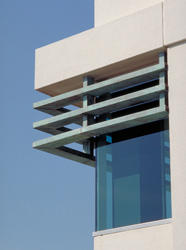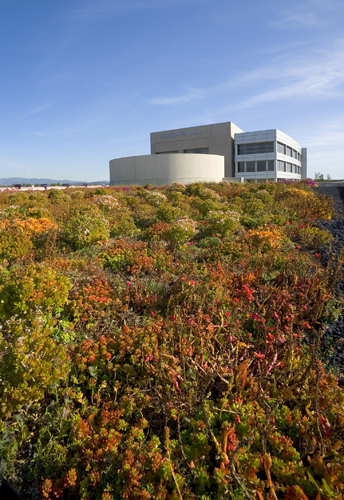Perspectives on Sustainable Design
 With these honors, it's no surprise Environmental Design + Construction came to President Dan Heinfeld, to write their final Perspectives on Sustainable Design column for 2009. The importance of this assignment is that it caps off the current year while relying on Heinfeld's guidance and vision for where the industry finds itself in 2010 and beyond. Not only are we commencing a new year, but a new decade as well and leaders like LPA will continue to play significant roles in the sustainability movement.
With these honors, it's no surprise Environmental Design + Construction came to President Dan Heinfeld, to write their final Perspectives on Sustainable Design column for 2009. The importance of this assignment is that it caps off the current year while relying on Heinfeld's guidance and vision for where the industry finds itself in 2010 and beyond. Not only are we commencing a new year, but a new decade as well and leaders like LPA will continue to play significant roles in the sustainability movement.
Enjoy an excerpt of this essential column, and join us as we look forward to a bright and prosperous 2010.
"... While it is easy for me to state that this makeover is the best thing to happen to our industry in the 30 years I've been practicing architecture, I have a growing concern that we may miss the real opportunity if we continue to focus on green scorecards. There are thousands of definitions of sustainability, and I do not want to create another, but clearly we must find ways to do more with less water, energy and materials.
We must change the discussion and stop promoting projects that use what are now best practices - recycled content, walk-off mats and all the other low-hanging fruit on the LEED scorecard - which have modest impact on energy and water use. This must change. There is no way, going forward, that we can afford the luxury of buildings that don't make real reductions in water and energy use. True water and energy reduction must become our priority, and I am not referring to buying renewable energy credits or other offsets. This is a building-by-building, project-by-project requirement to reduce onsite energy and water use in every possible way.
We must change the mindset where only a LEED building is viewed as a sustainable building. If, for whatever reasons, a client or a project team decides not to pursue LEED certification, it doesn't mean that designers cannot deliver a highly sustainable project. In fact, given the freedom to pursue sustainability and not chase points or mandated rating requirements, design teams might discover some very unique solutions. I believe that scale is the key to our sustainable future, and we need every building to have a sustainable quotient regardless if a LEED rating is achieved or not.  We must change the discussion from technology and systems solutions to sustainability, which begins with an understanding of climate and fundamental design principles. Before any system discussion takes place, start with passive design and conservation as a way to inform design. One may be surprised where this leads. A byproduct of this approach could be the beginning of a new regionalism where, in lieu of chasing fashion, an informed sustainable design shapes a project to be of its place and only appropriate for its place. LEED 2009 begins to address this regionalism through regional priority credits and water and energy accountability. It requires all LEED projects to share data, and these measures are just a start.
We must change the discussion from technology and systems solutions to sustainability, which begins with an understanding of climate and fundamental design principles. Before any system discussion takes place, start with passive design and conservation as a way to inform design. One may be surprised where this leads. A byproduct of this approach could be the beginning of a new regionalism where, in lieu of chasing fashion, an informed sustainable design shapes a project to be of its place and only appropriate for its place. LEED 2009 begins to address this regionalism through regional priority credits and water and energy accountability. It requires all LEED projects to share data, and these measures are just a start.
As we begin another year, I am sure that everyone is glad to have 2009 behind us. We have a great opportunity to open and honestly report the performance of projects and share lessons learned. We can collectively require meaningful reductions in energy and water performance for all sustainable projects, including ones that are not seeking LEED certification. I am hoping that in the next decade we embrace energy reduction and regionalism like we did scorecards because our future requires thousands of sustainable projects, versus hundreds, to make a difference." For the full article, visit ED+C's Perspectives on Sustainable Design.
Dan Heinfeld FAIA, LEED AP and President of LPA Inc. For more than 30 years, he has led the design direction of the firm. Since 1985, LPA has been recognized with more than 150 AIA national, state and components awards that promote the important role that sustainability has in the process to inform design. LPA provides services in architecture, planning, interior design, landscape architecture, engineering, signage and graphics.